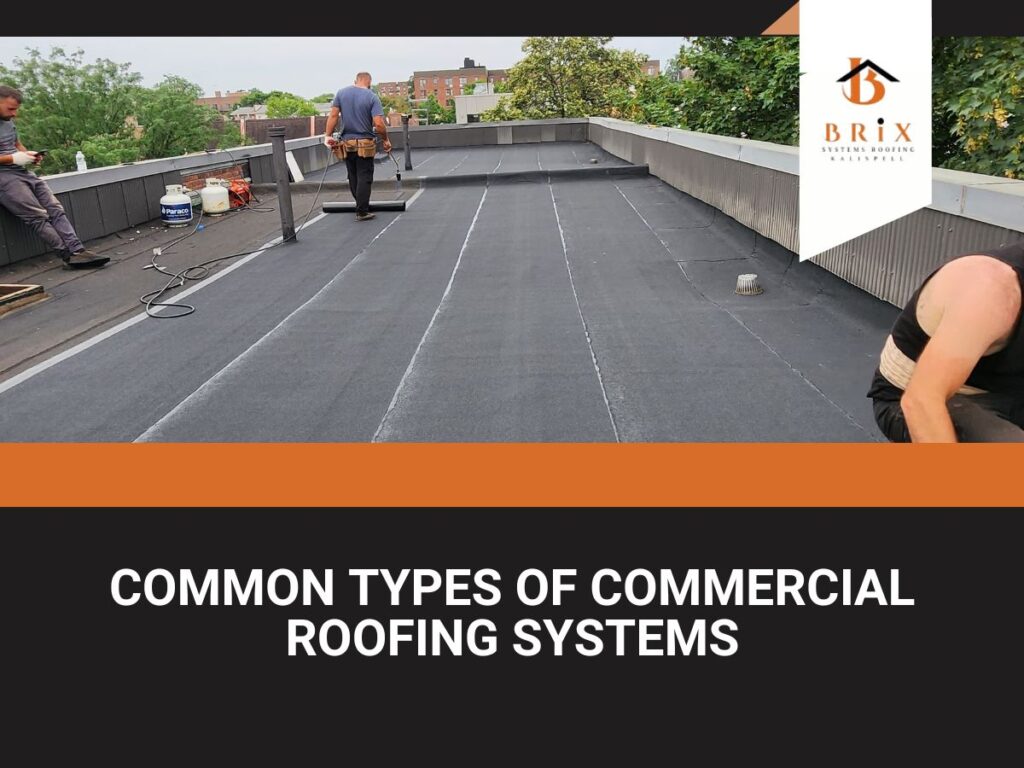
Choosing the right commercial roofing system is essential for ensuring durability, energy efficiency, and cost-effectiveness. The roof serves as the first line of defense against the elements, impacting the building's performance, maintenance costs, and overall value. With various options available, selecting the best system can be challenging.
This blog will explore some common types of commercial roofing systems, highlighting their unique benefits and considerations. From durable metal roofs to sustainable green roofing, we’ll cover a range of options to help you make an informed decision based on your building's specific needs.
Flat roofs are a popular and practical choice for many commercial buildings, including warehouses, office complexes, and retail stores, thanks to their cost-effectiveness and efficient design. These roofs are characterized by a minimal slope, usually less than 10 degrees, allowing for easier water drainage.
This design helps reduce construction costs and provides more usable space for building systems, such as HVAC units, or even for additional green roofs or recreational areas. However, flat roofs do require careful attention to drainage and maintenance to avoid issues such as water pooling. Below are common materials used:
Low-slope roofs are a popular choice for many commercial buildings, including office complexes, retail spaces, and industrial warehouses. These roofs are similar to flat roofs but feature a slightly steeper incline, typically ranging from 10 to 30 degrees.
The increased slope improves water drainage, which helps to reduce the risk of water ponding and enhances the overall durability of the roof. This makes low-slope roofs a reliable option for structures that need to withstand varying weather conditions while offering easy installation and long-term performance. Below are common materials used:
Metal roofing systems are highly regarded for their durability, longevity, and aesthetic appeal, making them a popular choice for commercial, industrial, and agricultural buildings. These roofs provide excellent protection against harsh weather conditions, including high winds, heavy rain, and extreme temperatures.
Metal roofing systems are available in a variety of materials, each offering distinct advantages depending on the building's needs and location. Their strength and resistance to weathering make them ideal for structures requiring long-term, low-maintenance solutions. Below are common materials used:
Green roofs, also known as living roofs, offer a sustainable and eco-friendly alternative to traditional roofing systems by incorporating vegetation into the design. These roofs consist of a waterproof membrane with layers of soil and plants, allowing for the growth of a variety of vegetation. The popularity of green roofs is rising in commercial and urban environments due to their many environmental benefits.
They not only help improve building insulation and energy efficiency but also contribute to urban biodiversity, promote the reduction of stormwater runoff, and provide natural air purification. Green roofs are particularly beneficial in cities where green space is limited and where managing rainwater and reducing the urban heat island effect are priorities. Below are common materials used:
Built-Up Roofing (BUR) is one of the oldest and most dependable roofing systems, widely used for low-slope and flat commercial buildings. The BUR system consists of multiple layers of bitumen or asphalt, combined with reinforcing fabrics such as fiberglass or polyester.
These layers are designed to provide an exceptional level of durability, waterproofing, and weather resistance, making BUR a reliable option for industrial, retail, and institutional buildings. Known for its longevity, a well-installed BUR system can last for decades with minimal maintenance, which is one of the reasons it remains a popular choice for flat or low-slope roofs. Below are common materials used:
Single-ply membrane roofing systems have become a popular choice for commercial buildings, particularly those with low-slope or flat roofs. These modern roofing systems consist of a single layer of synthetic material that is applied directly to the roof deck.
Their simplicity, flexibility, and ease of installation make them highly efficient and cost-effective for both new construction projects and roof replacements. Single-ply membranes are known for their durability, resistance to harsh weather conditions, and energy efficiency, which makes them ideal for commercial applications. Below are common materials used:
Shingle roofing systems are most commonly associated with residential buildings, but they can also be used in specific commercial applications, particularly for smaller buildings or those with a more residential appearance. These roofs consist of overlapping pieces of material installed from the bottom of the roof upward, forming a waterproof barrier that helps protect the structure from the elements.
While shingle roofing is less common for large commercial buildings, it remains a practical option for smaller commercial properties, such as offices, retail shops, and low-rise buildings.Below are common materials used:
Choosing the right commercial roofing system is vital for your building's longevity, energy efficiency, and maintenance. Each system offers unique benefits, whether you prioritize cost-effectiveness, sustainability, or durability. From easy-to-install flat and low-slope systems to energy-efficient metal and green roofs, there’s an option for every need.
While cost matters, it’s essential to consider long-term benefits such as energy savings, low maintenance, and resilience to local weather. By assessing your building’s requirements and consulting with roofing professionals, you can select the best option to protect your investment and enhance your business’s sustainability.